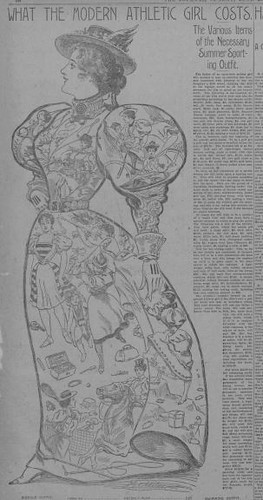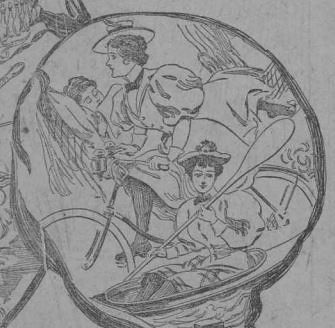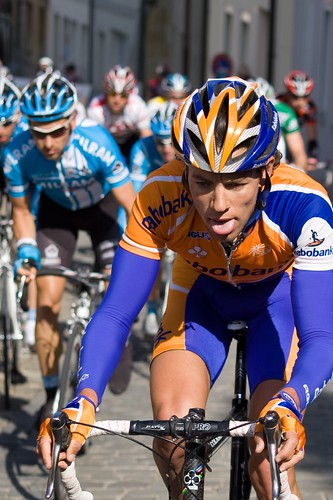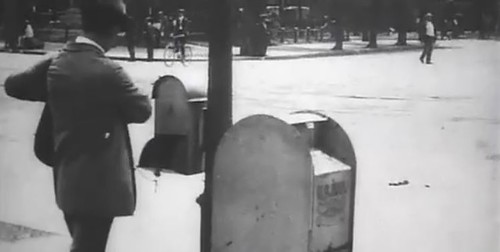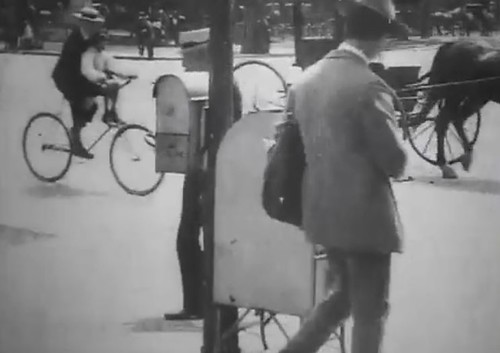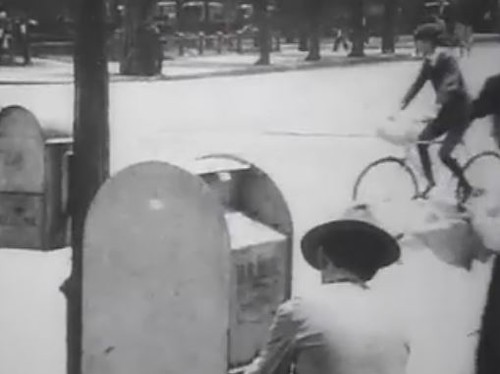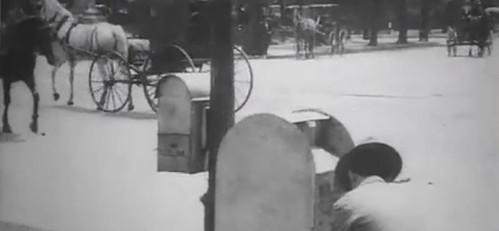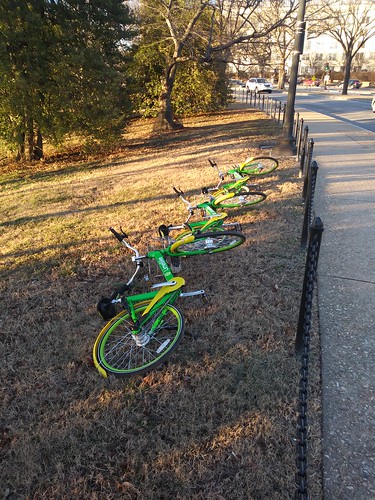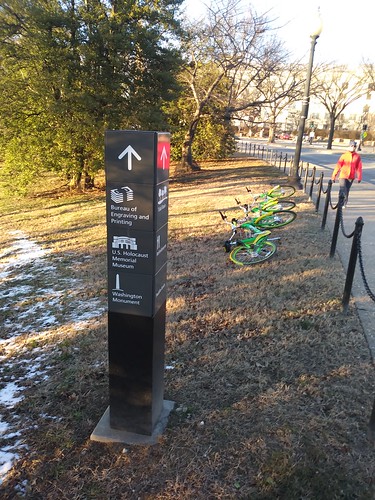The version on YouTube is so poorly rendered as to be almost useless
The default viewing version is poorly rendered here but the downloadable mp4 file is acceptable.
In this film, meant to show Post Office operations, you can see a certain amount street traffic as well. (The video is apparently meant to show how bags of mail are transferred between a street car and a Post Office horse-drawn wagon.) There is less than a minute and half shown of a major street in Washington DC. Whatever time of day this was, filmed in July 30 1903 (a Thursday), there wasn't much traffic generally, however I am struck by the number of bicycles. It isn't a vast number, but they are clearly being used for transportation by adults.
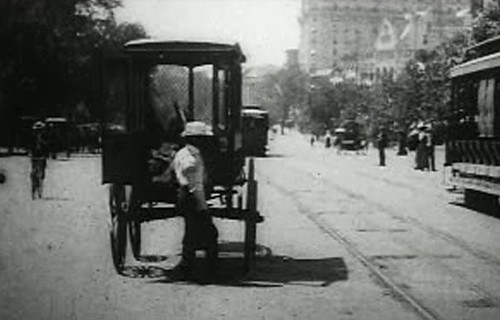
Cyclist appears suddenly at left, proceeds at measured pace out of view

Next cyclist appears at right, again riding at a measured pace
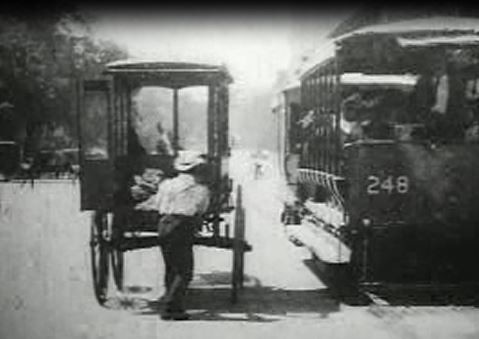
Due to low resolution, it isn't obvious but a cyclist is proceeding right to left on the next cross street in the distance and is just visible in the space been the streetcar and the Post Office wagon.

Cyclist rides into view, apparently against the flow of traffic on this side of the street
Street mail car, U.S.P.O.
Summary-The first scene appears to have been taken on a main thoroughfare of large city. In the immediate foreground is a horse-drawn U.S. mail vehicle waiting at the side of a streetcar track. Soon a streetcar approaches the camera position. It stops beside the mail vehicle and the driver unloads mail sacks from the streetcar. He then puts some sacks from his wagon onto the streetcar. As the film ends, both the streetcar and the horse-drawn mail delivery wagon leave the scene.
Contributor Names-Weed, A. E., camera.; American Mutoscope and Biograph Company.
Paper Print Collection (Library of Congress)
Created / Published-United States : American Mutoscope & Biograph Company, 1903.
Notes
- H34992 U.S Copyright Office
- Copyright: American Mutoscope & Biograph Company; 22Aug03; H34992.
- Cameraman, A. E. Weed.
- Cameraman credit from Niver's, Early motion pictures, p. 314.
- Filmed July 30, 1903 in Washington, D.C.
- Source used: Niver, Kemp R., Early motion pictures, 1985.
- Available also through the Library of Congress Web site as digital files.
- Received: 2/2000 from LC lab; ref print and dupe neg; preservation; Paper Print Collection.
Repository-Library of Congress Motion Picture, Broadcasting and Recorded Sound Division Washington, D.C. 20540 USA dcu
Digital Id-http://hdl.loc.gov/loc.mbrsmi/awal.1878
LCCN Permalink-https://lccn.loc.gov/00564571
